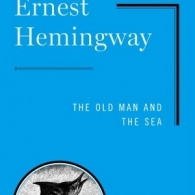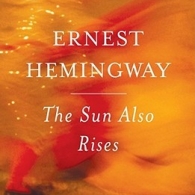Ernest Hemingway (July 21, 1899 – July 2, 1961) was a celebrated novelist, short story writer and a journalist whose influence on the literary world can’t be overestimated. His works have already become the classics taught at schools and universities. His adventurous personality and a distinctive writing method turned Hemingway into a literary celebrity of his times. The author of such novels as For Whom the Bell Toll, A Farewell to Arms, and The Old Man and the Sea had published six collections of short stories and two non-fiction books. His stories or “gems” were written in a very minimalistic style which the writer called the iceberg theory. He elaborated this approach to writing after being a journalist and a war correspondent.
Born in Oak Park, Illinois, Hemingway was the second child in a respected conservative family. Every year their family spent summer holidays in the North Michigan woods, an important place for the writer. His father was a country physician who cultivated boy’s passion for hunting, fishing, and camping. In 1917 the future writer graduated the local high school where he was writing for the school newspaper, Trapeze. His father clearly saw his son’s reluctance to attend college and helped Hemingway got his starting journalist position – a cub reporter at The Star Kansas City newspaper.
Like many writers before him, Hemingway became a journalist before becoming a novelist. After six months that job seemed boring to such an active young man. Hemingway made a decision to take part in World War I. Being aware of his defective eyesight, he volunteered to be an ambulance driver in the Red Cross medical service. After two months ambulance runs in Italy became routine and Hemingway traveled to the Austro-Hungarian border where he was severely wounded. At the hospital he met the biggest love of his life, a military nurse, who rejected his marriage proposal. This influenced his further relationships with women tremendously.
Upon returning home in 1919, he was offered a job of a foreign correspondent in the Toronto Star Weekly. Nicknamed Papa, he traveled all over the world, covering the different military conflicts and important political events. His literary career launched after Hemingway moved to Paris, France, a capital of modernist literary movement. He met an American writer Gertrude Stein who became his mentor. She was the one who introduced him the term “Lost Generation” which the writer would later popularize in his earliest novel. Years in Paris were the most productive in his writing career. Hemingway’s first collection of short stories, Three Stories and Ten Poems, appeared in 1923.
Three years later, The Sun Also Rises, Hemingway’s earliest novel was presented in America. It turned him into a well-known writer. Hemingway described his near-death experience and the atrocities of the warfare in his most popular novel, A Farewell to Arms. At the same time, he proceeded with his work on his short stories about a semi-biographical character Nick Adams. A big-time hunter, he went on a 10-week safari tour in Africa and it was a very fruitful event in terms of writing. The writer used this experience as a foundation for his well-known story The Snows of Kilimanjaro plus a novel The Green Hills of Africa.
Being a man of action, he worked as a war correspondent during the Spanish Civil War and World War II. In 1939 Hemingway practically moved to Cuba. Novels written during that period including For Whom the Bell Tolls and The Old man and the Sea were received very warmly. The latter even won him the Pulitzer Prize in 1952. His achievements in literature were distinguished by a Nobel Prize in two years. The second African safari turned out a complete disaster – as a result of two plane crashes, his health deteriorated and he couldn’t stand being helpless. Papa committed suicide in 1961.




